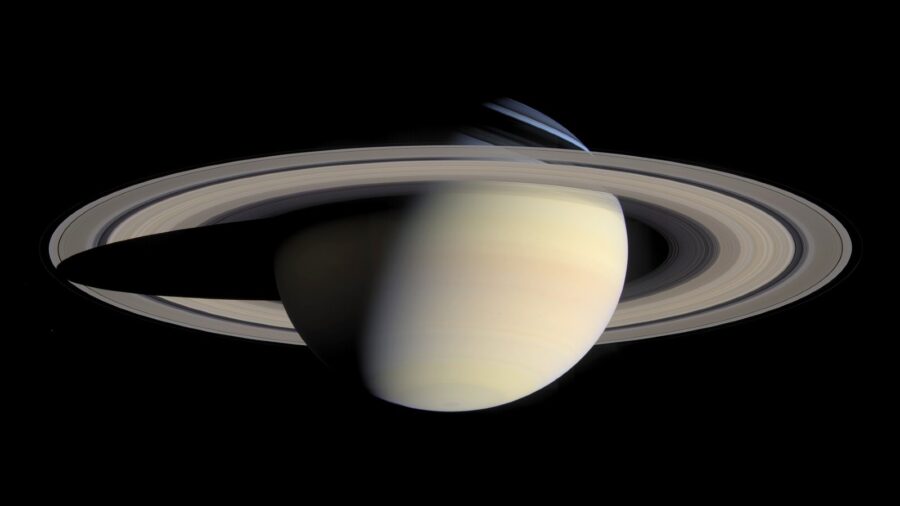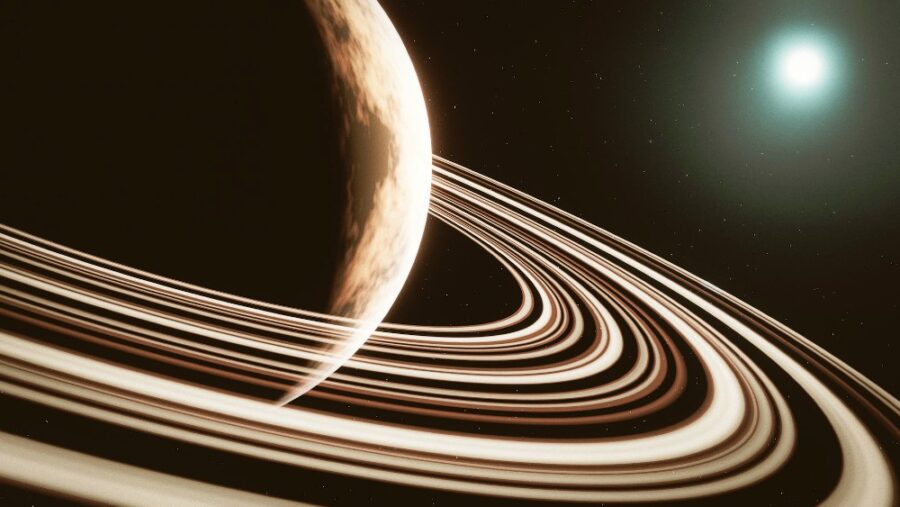Huge Fault on Saturn’s Moon Reveals Signs of Alien Life?

If you’re a science fan or just hoping for alien life somewhere in the cosmos, rejoice. A recent study into the humongous “tiger stripe” fault lines on Saturn’s moon Enceladus has sparked speculation among scientists, who theorize about the potential existence of alien life underneath the lunar body’s icy tundra.
[T]here seems to be a similarity between the evidenced motion along these fractures and the eruption of ice crystal jets beneath Enceladus’ icy crust.
The fault lines, despite being incredibly huge and on the moon of another planet, resemble California’s famous San Andreas fault. NASA devotees will tell you the agency first observed them in 2005 via the Cassini spacecraft. The fault lines comprise four parallel fractures, all located at the moon’s south pole.
There, the latest research revealed an incredible correlation: there seems to be a similarity between the evidenced motion along these fractures and the eruption of ice crystal jets beneath Enceladus’ icy crust. In a process boasting the overly cool name of cryovolcanism, ice crystals blast out of the lunar surface–crystals thought to stem from an ocean buried beneath Enceladus.
A PhD candidate at the California Institute of Technology (Caltech), Alexander Berne, led the scientists researching Saturn’s moon and fueling hype about alien life. Said scientists undertook numerical simulations to reveal that the sliding, side-by-side activity implied by Enceladus’ tiger stripes matches noticeable changes in the brightness of the ice crystal jets. In addition to constituting a sci-fi worthy situation–perhaps leading ice-aliens bursting from the frozen ground, for instance–the movements bear a striking similarity to Earth’s San Andreas fault.
[I]t raises intriguing questions about the possibility of alien life hidden beneath the frozen surface of Saturn’s mysterious moon.
All of which suggest a dynamic, multifaceted interaction between tidal forces and the moon’s subsurface ocean.
Furthermore, Berne and his colleagues theorize that the Saturnine faults’ “pull-aparts” (junctures in the faults where they, ya know, pull apart) determine jet activity. These pull-aparts facilitate water from the subsurface ocean of Saturn’s moon ascending through the icy shell, supplying the cryovolcanic jets; experts think all of this watery activity could imply alien life.
Like with commonalities between the Saturn rifts and the San Andreas Fault mentioned above, the pull-apart observation strongly reminds scientists of terrestrial tectonic processes, once again along—you guessed it—that same Californian fault line.

Interestingly, the research’s implications extend far beyond the scope of planetary geology. Indeed, Enceladus and its buried, global ocean have long enjoyed the spotlight as a potential hotspot for life beyond our own Pale Blue Dot.
Published in the journal Nature Geoscience, the Caltech study represents a significant advancement in humanity’s understanding of Enceladus.
Offering additional support for this hypothesis, the Caltech team’s work suggests that the ocean on Saturn is, in fact, long-lived and that its lifespan may preclude conditions conducive to alien life.
For this part, Berne underscored the importance of further exploration alongside direct observations, all in an effort to lend empirical confirmation to these findings. The researcher pointed out that geophysical measurements of Enceladus garnered through radar would supply a more concrete sense of whether his team’s hypotheses hold water, no pun intended.
Published in the journal Nature Geoscience, the Caltech study represents a significant advancement in humanity’s understanding of Enceladus. Additionally, it raises intriguing questions about the possibility of alien life hidden beneath the frozen surface of Saturn’s mysterious moon.
While scientists progress in unraveling the enigmas of our fascinating solar system, Saturn’s moon persists as a persuasive target for future research—especially when discovering alien life. Ultimately, as our space tech improves, the eventuality of finally unveiling extraterrestrial lifeforms in our cosmic neighborhood could be around the corner.
Source: LiveScience










